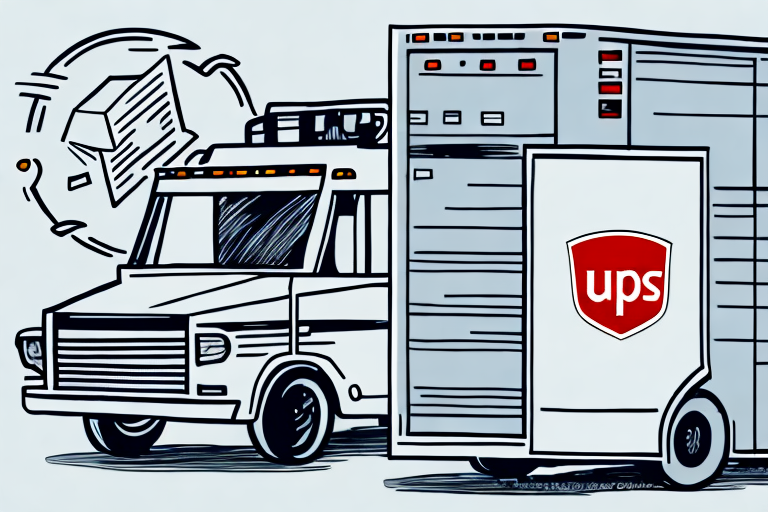Is UPS Part of the United States Postal Service?
No, UPS (United Parcel Service) is not part of the United States Postal Service (USPS). While both are major players in the shipping and logistics industry, they operate as entirely separate entities with different ownership structures and service offerings.
Understanding UPS and USPS
Ownership and Structure
USPS is an independent agency of the U.S. federal government, established by an act of Congress in 1775 and restructured in 1971. It operates as a public service with a mission to provide reliable mail delivery to all Americans, regardless of location.
In contrast, UPS is a privately held, publicly traded company founded in 1907. It operates on a for-profit basis, focusing on package delivery and supply chain management services worldwide.
Service Offerings
Both USPS and UPS offer a range of shipping services, tailored to different needs:
- USPS: Specializes in postal services such as Priority Mail, First-Class Mail, and Priority Mail Express. Additionally, USPS provides PO box rentals, postal money orders, and international shipping options.
- UPS: Provides diverse package delivery options including UPS Ground, UPS 2nd Day Air, and UPS Next Day Air. UPS also offers specialized services like UPS Express Saver and UPS Worldwide Express for international shipments.
Tracking and Delivery Confirmation
UPS offers comprehensive tracking with real-time updates on package location and status via its advanced online platform and mobile app. USPS provides tracking information and delivery confirmation for most services, though the level of detail may vary compared to UPS.
History and Evolution of UPS and USPS
USPS: A Historical Overview
Established in 1775, USPS has been integral to American communication and commerce for over two centuries. It has evolved from simple postal routes to a robust package delivery service in the digital age.
For more on USPS history, visit the official USPS website.
UPS: From Messenger Service to Global Logistics Leader
UPS began as a messenger service in 1907 in Seattle and has grown into a global logistics powerhouse. It now operates in over 220 countries and territories, employing more than 500,000 people worldwide.
Learn more about UPS's history on their official history page.
Operational Differences Between UPS and USPS
Business Models
UPS operates on a for-profit model, prioritizing efficiency and expansion to enhance shareholder value. This focus drives continuous innovation in logistics, technology, and customer service.
USPS, as a government agency, emphasizes universal service and affordability over profit. It aims to provide dependable postal services to every address in the United States, including remote and rural areas.
Delivery Networks
UPS maintains an extensive global network of delivery trucks, aircraft, and sorting facilities, enabling it to deliver packages almost anywhere in the world. In comparison, USPS primarily focuses on domestic deliveries within the U.S., though it also offers international shipping through partnerships.
Technology and Innovation
UPS invests significantly in technology solutions such as automated shipping systems, advanced tracking, and inventory management tools to enhance the shipping experience for businesses and consumers.
USPS offers essential technology services like online postage purchasing and basic package tracking. However, its technological infrastructure is not as extensive as UPS's.
Comparing Services Offered by UPS and USPS
Shipping Options
Both companies provide various shipping options to accommodate different needs:
- USPS:
- Priority Mail (1-3 days)
- First-Class Mail (2-5 days)
- Priority Mail Express (overnight)
- UPS:
- UPS Ground (1-5 days)
- UPS 2nd Day Air
- UPS Next Day Air
Additional Services
Both USPS and UPS offer supplementary services to enhance shipping reliability and security:
- USPS: Includes options like Certified Mail, Return Receipt, and Restricted Delivery for securing important documents and packages.
- UPS: Provides same-day delivery services, customs brokerage, and specialized logistics solutions for businesses.
Choosing Between UPS and USPS: Key Considerations
Cost and Pricing
USPS is generally more affordable for small and standard-sized packages, making it a cost-effective option for individual consumers and small businesses. Shipping costs with USPS are based on package weight, size, and destination.
UPS tends to be more expensive but offers a broader range of services and faster delivery options. Its pricing structure is ideal for businesses requiring reliable and expedited shipping solutions.
Delivery Speed
If delivery speed is a priority, UPS offers guaranteed delivery times with services like Next Day Air and 2nd Day Air. While USPS’s Priority Mail Express also guarantees overnight delivery to most locations, overall delivery speed may vary based on the selected service.
Tracking and Reliability
UPS provides comprehensive, real-time tracking and is renowned for its reliability in adhering to delivery times. USPS offers tracking services as well, though the level of detail and update frequency may not be as extensive as those provided by UPS.
Pricing Comparison: UPS vs USPS
When comparing prices, consider the specific requirements of your shipment:
- USPS is typically more economical for lightweight and standard-sized packages, especially for domestic shipping.
- UPS, while more expensive, offers value through its extensive service options, faster delivery times, and superior tracking capabilities.
For example, shipping a 1-pound package via USPS Priority Mail may cost around $8.70, whereas the same package via UPS Ground starts at approximately $7.30 but offers different delivery speed and tracking features.
Ultimately, the best choice depends on balancing cost, speed, and the level of service required for your shipments.
For detailed pricing, visit the USPS Pricing Page and UPS Shipping Rates.
Tracking Your Packages: UPS vs USPS
Both UPS and USPS offer package tracking services, but there are key differences:
- UPS: Provides detailed tracking with real-time updates accessible through their website and mobile app. Notifications can be sent via email or SMS, keeping customers informed at every stage of the delivery process.
- USPS: Offers basic tracking information, including package origin, transit points, and delivery status. The USPS Mobile app allows customers to track packages on the go.
UPS tracking is generally more comprehensive, offering estimated delivery times and more precise location data, which is beneficial for time-sensitive shipments.
For more information, visit the UPS Tracking Page and the USPS Tracking Page.
Pros and Cons of Using UPS vs USPS
USPS: Pros and Cons
- Pros:
- More affordable for small and standard packages.
- Extensive network with access to every U.S. address.
- Offers unique services like PO boxes and postal money orders.
- Cons:
- Longer delivery times compared to UPS.
- Limited tracking details.
- Financial challenges have occasionally affected service reliability.
UPS: Pros and Cons
- Pros:
- Comprehensive and reliable tracking systems.
- Faster delivery options with guaranteed times.
- Extensive global network and specialized logistics solutions.
- Cons:
- Higher cost, especially for small packages.
- Additional fees for premium services.
- Complex pricing structure can be confusing for some users.
Choosing the Best Shipping Service for Your Business
Assess Your Shipping Needs
When selecting a shipping service for your business, consider the following factors:
- Volume of Shipments: High-volume businesses might benefit from UPS’s bulk shipping discounts and advanced logistics solutions.
- Delivery Speed: Businesses requiring fast delivery may prefer UPS’s expedited services.
- Cost Efficiency: Smaller businesses or those shipping lightweight items might find USPS to be more cost-effective.
Evaluate Customer Service and Support
Reliable customer service is crucial for resolving shipping issues promptly. UPS offers dedicated business support and multiple communication channels, including phone, email, and live chat. USPS provides customer assistance through their website, phone support, and local post offices.
Stay Informed with Industry Trends
The shipping industry is continuously evolving with advancements like drone deliveries and automation. Staying informed about these trends can help your business leverage the latest technologies for improved efficiency and customer satisfaction.
For insights into shipping industry trends, refer to reports from the American Bar Association and Forbes Technology Council.
Tips for Saving Money on Shipping Costs
Optimize Packaging
Using the right packaging size can significantly reduce shipping costs. Avoid oversized packages to minimize dimensional weight charges and consider lightweight materials without compromising the safety of the shipment.
Take Advantage of Discounts
Both UPS and USPS offer discounts for businesses that sign up for account-based pricing. Additionally, bulk shipping can result in lower rates per package. Explore membership programs or negotiate rates based on your shipping volume.
Compare Shipping Rates
Regularly compare shipping rates and services from different providers to ensure you’re getting the best deal for your specific needs. Tools like shipping calculators can help determine the most cost-effective option.
Common Myths About UPS and USPS
Several misconceptions surround UPS and USPS:
- Myth: UPS is part of the USPS.
- Fact: UPS and USPS are entirely separate entities with different ownership structures and operational models.
- Myth: The USPS is a dying entity.
- Fact: While USPS has faced financial challenges, it remains a critical component of the American logistics infrastructure, serving millions daily.
- Myth: UPS is only for international shipping.
- Fact: UPS offers a wide range of domestic shipping services tailored to various needs.
Future Outlook for UPS and USPS
Both UPS and USPS are adapting to the changing logistics landscape:
- UPS: Continues to invest in technology and sustainability initiatives, such as electric delivery vehicles and drone delivery trials.
- USPS: Focuses on modernizing its infrastructure and expanding its package delivery services to compete with private carriers.
With e-commerce growth driving higher demand for shipping services, both companies are poised to play significant roles in the future of global logistics.
For more on UPS's sustainability efforts, visit their Sustainability Page. To learn about USPS's modernization plans, refer to the USPS Newsroom.
Conclusion
In summary, UPS and USPS are distinct entities offering different shipping services tailored to varying needs. While USPS is ideal for affordable and reliable domestic mail services, UPS provides comprehensive logistics solutions for businesses requiring speed and advanced tracking. By understanding the differences and evaluating your specific requirements, you can choose the shipping service that best aligns with your personal or business needs.






















